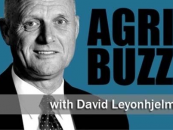Half of all marketing (levy) expenditure is wasted; the challenge is to identify which half
-
RELATED
- Levy stoush ramps up
- In the dark on mushroom levy
- Levies disallowance motion postponed
- Blog: A tax by any other name
- Poll: Are rural health services improving?
-
LATEST
- ‘Reform CCA’: grassfed levy report
- Suspicious fire at Griffith juice factory
- Taxpayer slug for reef compromise
- Japan, Korea driving grainfed exports
- Lamb down, mutton up to Middle East
Caratti to appeal corruption ruling
WHEN I moved in the Senate to disallow regulations that would increase levies on mushrooms, onions and mangoes, you would think it signalled the end of the world as we know it. I was misrepresented, criticised and widely abused.
An organisation emerged that nobody had ever heard of, Across Agriculture, claiming to represent 45 producer organisations opposed to my plan. There was even a rally by onion growers in Tasmania.
None of that matters much, but the claim that I am out of step with the overwhelming majority of growers does matter. I have been listening to levy payers for decades and I know what I’ve heard.In many sectors, if not all, there is deep discontent about levies.
As a result I have deferred consideration of the disallowance motion until late September. By then I anticipate that many levy payers will have taken the trouble to inform those with a vested interest in letting levy dogs sleep that they are the ones out of step. I have also co-sponsored a motion to establish a Senate inquiry into levies which will consider opportunities by levy payers to approve and reapprove their imposition.
As I have written previously, levies are a form of taxation based on turnover. A farm can be highly unprofitable but still pay a lot of money in levies. Some farmers pay millions.
Levies come in three flavours: biosecurity, research and development, and marketing. Of these, biosecurity is not in question. Indeed, a levy to fund biosecurity programs is a commendable approach to relieving taxpayers of the cost of controlling major disease outbreaks. I doubt if many levy payers would begrudge them at all.
My concern is with the other two and the lack of accountability of levy spenders to levy payers. A majority of growers would probably approve of R&D levies, at least some of the time. While some R&D corporations pay their senior staff grossly inflated salaries and a lot of money is wasted on matters that do nothing to improve farm performance, profitability or prospects,
occasionally there is wonderful research undertaken from which the entire industry benefits, and which would otherwise never have occurred.
Marketing levies are a different matter. As the saying goes, half of all marketing expenditure is wasted; the challenge is to identify which half. The only certainty is that those spending the money mostly have less idea than almost anyone else. While generic marketing can certainly be valuable at times, particularly when developing an export market, much of it is a total waste.
My impression is that quite a lot of growers, perhaps a majority, know all that quite well. I also expect most would vote to retain R&D levies if they were given the option, and many would vote to retain marketing levies. Wool growers and dairy farmers, who have a vote every three and five years respectively, do exactly that.
But for all the other levy payers, the situation is comparable to what someone once said about democracy in much of Africa; there is one man, one vote, once. That is, levy payers get one chance to vote on whether to impose or increase a levy, but never vote again. It’s set and forget. That leads to disengagement from the entire system.
It’s like paying any other kind of tax; there is no sense of ownership. Levies are compulsory and must be paid, but there is little interest in how they are used.
This can be seen from the votes of growers who were asked to approve increases in levies on mushrooms, onions and mangoes. Of 793 levy-paying mango growers, 69 voted in favour and 66 against. Of 244 levy-paying onion growers, 20 voted in favour and 15 against the increase. Of 68 mushroom growers, 33 voted in favour and 11 against.
From this we are expected to believe that the noisy voices raised against me represent the dominant opinion.
What Across Agriculture and its members need to explain, if indeed it has members, is whether they genuinely believe their own assertions. Do they seriously believe that growers are overwhelmingly in favour of the current levy system? Because if they are, then they have nothing to fear from my proposal for a three-yearly vote by levy payers in each sector, weighted according to production.
Indeed, the obvious question is, if growers are as keen to pay levies as they insist, why is it necessary to make them compulsory?
In my view primary producers should be alarmed that an ad-hoc organisation nobody has heard of is lobbying politicians to prevent them from having a say in levies.
Some, including the Minister for Agriculture, are arguing that it is too expensive to give levy payers a regular vote, citing the cost of the wool and dairy votes. That is garbage; most of the cost of those votes is attributable to arguing for or against the levies. It is like including TV advertising by political parties in the cost of running an election.
All that’s required for levy democracy is a register of levy payers. With that, voting can occur online or by post at minimal cost. Enrolling levy payers, where no register exists currently, could occur online too. If levy payers prefer not to enrol to vote, or enrol but choose not to vote, that ought to be their choice.
Many of the complaints about the expenditure of levies would disappear once those spending them were fully accountable to those who paid them. It’s called taxation with representation.









